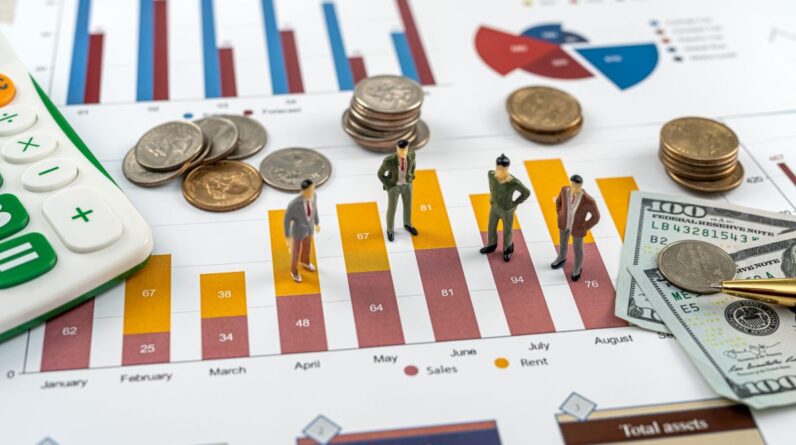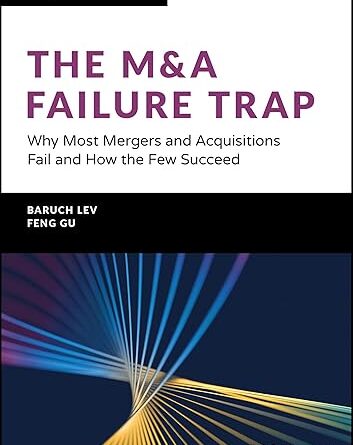
For more insights on the equity risk premium (ERP) from Rob Arnott, Cliff Asness, Mary Ida Compton, Elroy Dimson, William N. Goetzmann, Roger G. Ibbotson, Antti Ilmanen, Martin Leibowitz, Rajnish Mehra, Thomas Philips, Jeremy Siegel, and Laurence B. Siegel, check out Revisiting the Equity Risk Premium, from CFA Institute Research Foundation.
“How many here think the next 10-year equity returns are going to be below the long-run average? I certainly do. Is there anyone here who doesn’t?” — Jeremy Siegel
In the latest installment of the Equity Risk Premium Forum conversation, Laurence B. Siegel, Rob Arnott, Cliff Asness, Mary Ida Compton, Elroy Dimson, William N. Goetzmann, Roger G. Ibbotson, Martin Leibowitz, and Jeremy Siegel conclude their earlier exploration of the CAPE ratio’s utility, or lack thereof, as a forecasting and market-timing tool and then take a broader look at their expectations around the direction of the equity markets and the equity risk premium.
In particular, they focus on how to respond when equities are predicted to underperform their historical average. How should investors and pension funds adjust their allocations? How should the former change their spending habits when the returns they anticipated don’t look likely to materialize?
From there, the participants move from the abstract to the particular and consider how equities will fare over the next 10 years. The consensus was not a bullish one. They all believe that stocks will fail to match their long-term average performance in the years ahead.
What follows is a lightly edited and condensed transcript of this portion of the discussion.
Will We Be in a Low-Return Environment?
Cliff Asness: I think CAPE has been an empirical failure for timing. It has still been a success if all you want to know is whether you expect the next 10 years to be better or worse than average.
Rob Arnott: Very much so.
Laurence B. Siegel: I agree that CAPE is a tool for forecasting, not timing — but some people will use long-term forecasts as a timing tool, although they should not.
Asness: We’ve all been guilty of that. When you are forecasting poor 10-year returns, even if you don’t explicitly say to underweight equities, sometimes that’s what it sounds like. But we should remember that CAPE is not that good for that. The forecast is, nevertheless, important. If you’re a pension plan and expect 2% instead of a 6% return on stocks in the next 10 years, that information might be relevant to you.
L. Siegel: No kidding.
Asness: It helps you answer questions like “How much do you have to save? How much can you spend?” It is an important number. It’s just not an important number for deciding when to get in and out of the market.
Jeremy Siegel: But what happens if you say that stocks are going to return less, but bonds will return much less?
William N. Goetzmann: Then Mary Ida has a problem when she talks to her clients.
L. Siegel: She sure does.
J. Siegel: That means you go into stocks. They’re going to return less, but you go into stocks.
Mary Ida Compton: It’s a strategic asset allocation decision, not a tactical one. Stick with it over the long term, but what you as a pension plan sponsor are going to have to do is suck it up and put some more money into the fund.
Asness: Yes, you’re exactly right. When expected returns on everything are low and you don’t have the ability to know when those low returns will be realized, you simply lower your expectations.
L. Siegel: That’s what Jack Bogle said: budget for it.
Asness: It’s important to note that saying “Returns on an asset will be lower than normal” is different from saying “They have a negative expected return.” So, when we say stocks will be worse than bonds, do we mean that stocks have a negative expected return? If you actually believe that, you should underweight them or short them.
But if you believe that they have a healthy positive risk premium, just half of the normal amount — and if you underweight them now and overweight them later on when they’re more attractive — you could still make money, if the timing signal is any good. Underweighting a positive hurts you, but overweighting a positive helps you more. This is a very long game.
Arnott: And it will be wrong at times.
Martin Leibowitz: On the other side of that coin: How often have you heard the argument that “I have to be in stocks because bonds don’t give me any return”?
Compton: A million times.
Leibowitz: When will that argument be false?
L. Siegel: When the expected return on stocks is lower than the expected return on bonds.
J. Siegel: You’re right.
Arnott: That was the case in the year 2000.
J. Siegel: That was about the only time.
Arnott: Mary Ida’s task is very challenging. Any sort of timing mechanism is going to be suggesting buying when equities are fiercely out of favor, unloved, cheap — and will suggest trimming when they’re relatively fully priced and people are comfortable with them. So, for far too many institutional investors, that sort of information, while useful, is not actionable.
Compton: The problem with timing, which we never do, is that there just aren’t enough data points to prove anybody can do it. So, why bother? You’re just shooting yourself in the foot.
L. Siegel: Mary Ida faces a situation that I believe most of us don’t, which is that her clients have fixed liabilities. As individual investors, we can adjust our consumption to the varying fortunes of our portfolios, but a pension fund really can’t. They have to come up with outside money. Moreover, the fortunes of markets and of pension plan sponsors are correlated. When the market’s down, the company is usually also not doing well. It really puts you in a terrible situation. You are supposed to earn something like 7% to meet your pension obligations, but there’s nothing to buy that has an expected return of 7%.
Asness: If you literally have a subsistence level of required return that is considerably higher than any reasonable portfolio’s expected return — and it’s true subsistence, like you have to make it or you die — you are forced to do the opposite of most of our instincts. You’re forced to take more risk when risk is not being very well rewarded. While that’s a real-world problem for some, it is not the optimal strategy.
Sometimes people skip a step and end up saying that their expected return on stocks is 11%. Sometimes Wall Street strategists do this. They engage in a kind of magic prestidigitation where they say to themselves, “I’ve explained to you why holding stocks is justified, justified means normal, normal means 11%.” [Laughter.]
That last step is not right. You have to accept the lower expected return on both stocks and bonds. I think some people forget that bonds now have very low yields and that you add the equity risk premium to that low number. You don’t get 11%.
Reaching for Yield — In Bonds and in Stocks
Roger G. Ibbotson: Clearly, this happens in the bond market because people reach for yield when spreads are really tight. Obviously, that is a time when lower-quality bonds are not giving much payoff for the extra risk, but at such times bondholders actually start buying more of them. You may see something analogous in the stock market: When the equity risk premium is low, signifying less payoff for risk, Mary Ida’s clients may want her to invest more in equities, not less, because that’s the only way they have a possibility of meeting their goals.
Compton: What happens in reality, though, is that when they realize they’re going down the tubes, instead of moving out on the risk axis to get potentially higher returns, they stick all the money in something that’s very stable, like core bonds. The problem with the risk assets is that their volatility is high, and the client doesn’t want to take a chance on being underwater three years earlier than they would have been otherwise. They may assume that the pension fund will go under in 5 or 10 years and say to themselves, “We got a death sentence, and we’re just going to hunker down and pay out what we can, and we know it’s only going to last for five years.” They face a weird set of incentives.
The Psychology of Investing in Terrible Markets
Elroy Dimson: Don’t these people need some personal advice, as well as advice about management of the pension fund?
Compton: Emotional advice? You mean psychological advice?
Dimson: To work longer. And maybe at a slower pace.
Compton: Well, the jobs may not be there.
Dimson: You have to get your mind around that. Cutting your expenditure on holidays or lowering your cost of living in some other way. You’ve got to adjust to it.
Leibowitz: The mentality is this: If you find yourself in dire straits, you invest with some hope that the market will somehow bail you out. You just continue doing what you’re doing in the short run and postpone deciding to cut back on expenses.
So, a change of strategy is something that is not done casually. It’s done very reluctantly. It’s only done either when you have to or when some event forces you to. So, the continuation of a strategy in an institution, and in individuals as well, has inertia — in other words, a bias to the strategy that is already being pursued. That observation has a power beyond just the theory that you should maintain a certain allocation over time. Never mind the theory. There is a behavioral imperative that forces people in an institution to maintain a consistent strategy. And in fact, in some ways, even for an institution, it doesn’t make sense because, as we were saying earlier, if they had a belief that the original allocation was based upon some set of risk premium assumptions, then if the market changes radically, wouldn’t you think that if those risk premium assumptions change radically, there should be some corresponding shifts in the allocation? No, they typically seem to be rebalanced back to the same allocation they had a year before, two years before, three years before, four years before. One of the most amazing behavioral phenomena is that allocations are amazingly stable over time.
Is It Time to Pray?
Dimson: There was another solution to that in 2008. I was, like many of you, invited to a number of conferences about what we should do as this crisis unfolded. When things looked really bad and one of the fund managers asked the audience, “What should I do?” somebody piped up and said “pray.”
J. Siegel: I’d like to ask a very informal poll. How many here think the next 10-year equity returns are going to be below the long-run average? I certainly do. Is there anyone here who doesn’t? Or are you uncertain?
Asness: I agree; they will be below.
[All nod in agreement.]
J. Siegel: Okay, so everyone. Here’s the harder question. How many here believe the [realized] equity risk premium, the title of this decennial conference, is going to be lower than its historical value? Let’s say it’s 3.5% expressed on a compound basis, or 4%?
Compton: That’s the historical level?
J. Siegel: What was the last 10 years’ realized equity risk premium, and what was the last 20 years’ realized premium?
Compton: I have the 10-year numbers here. For the 10 years ended September 2021, the S&P 500 returned 16.63%, compounded annually. Long Treasuries returned 4.39%.
L. Siegel: So, the realized 10-year equity risk premium from September 30, 2011, to September 30, 2021, was 11.73%. Over the 20 years from September 30, 2001, to September 30, 2021, it was 2.88%.
This number is much lower than the 6.2% realized equity risk premium from 1926 to 1999, or the 4.7% realized premium from 1926 to 2020.
Note, however, that long-term Treasury bond returns have been very high in the 21st century as yields have plummeted, so stocks had a high hurdle to beat; bond returns will not be as high going forward, so the equity risk premium is likely to be higher than it has been so far in this century, even if equities themselves do not have higher returns than they did over that same period.
Arnott: On a 20-plus year basis, Jeremy, I would say the equity risk premium going forward will be higher, not lower.
For more on this subject, check out Rethinking the Equity Risk Premium from the CFA Institute Research Foundation.
If you liked this post, don’t forget to subscribe to the Enterprising Investor.
All posts are the opinion of the author. As such, they should not be construed as investment advice, nor do the opinions expressed necessarily reflect the views of CFA Institute or the author’s employer.
Image credit: ©Getty Images/Ryan McGinnis
Professional Learning for CFA Institute Members
CFA Institute members are empowered to self-determine and self-report professional learning (PL) credits earned, including content on Enterprising Investor. Members can record credits easily using their online PL tracker.












